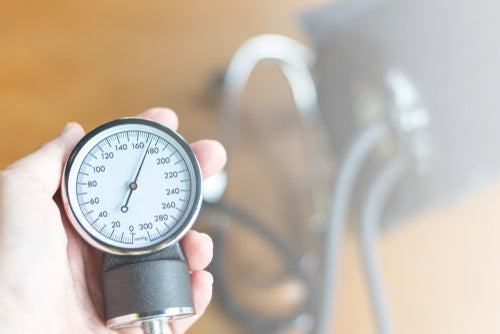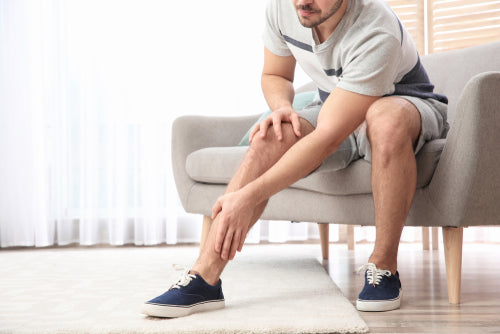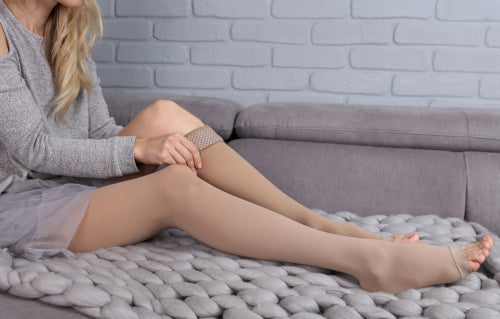Understanding Compression Sock Levels: Mild Compression Socks
There are five main compression sock levels, from mild to severe, and sometimes it can be tough to pinpoint exactly what level you need. To help clear up the confusion, we’ll be taking a deep dive into each of the five levels over the coming months. Today, we kick off our series with a primer on mild compression socks.

What Is mmHg?
mmHg is an abbreviation for “millimeters of mercury.” In science terms, one mmHg is a unit of pressure equal to the pressure exerted by a column of mercury one millimeter high at 0°C and under the acceleration of gravity and nearly equivalent to 1 torr (about 133.3 pascals). While you may not realize it, mmHg is commonly used for pressure ratings, such as blood pressure, with normal blood pressure being 120/80 mmHg.
Basically, this means that the higher the mmHg rating of a compression garment, the more pressure it will exert on your body. The pressure from the compression socks is usually expressed as a range because the compression is graduated–i.e., fades up the leg–so the compression is greater towards the ankle and less towards the top.
 What Does Mild Compression Do?
What Does Mild Compression Do?
Mild compression falls into the 8-15 mmHg range. This level of compression can help with many different mild conditions, including:
- Providing relief from achy and tired legs
- Aiding to prevent legs from becoming fatigued during long periods of sitting and standing
- Helping to reduce minor swelling in the lower legs
- Discouraging the development of spider and varicose veins, especially during pregnancy
- Maintaining healthy, energized legs
Those hoping to address more severe conditions should talk to their doctor and look into higher levels of compression socks. Examples of conditions that require more than mild compression include deep vein thrombosis, lymphedema, severe varicose veins and superficial thrombophlebitis.
Who Should Use Mild Compression?
Mild compression is the lowest of all five compression levels and should be used to maintain healthy legs and prevent problems from occurring. It’s not strong enough to treat problems that have already arisen. Some individuals who may find mild compression socks helpful include:
- People who sit all day
- People with diabetes
- Pregnant women (especially those early in their pregnancies)
- Otherwise healthy people taking a long flight
- Those at risk for spider and varicose veins
If you’re not sure whether or not this is the right level of compression for you, talk to your doctor about whether or not mild compression socks could prevent or alleviate the symptoms you’ve been experiencing.

Popular Mild Compression Sock Styles
Mild compression stockings are available in many different designs. The four main options are:
Ankle and Crew Socks
Ankle socks stop at the ankle, while crew socks reach midway up the calf for an athletic look. They’re a good choice for people who want the benefits of compression for their feet and ankles but want the rest of their legs to be able to breathe. Ankle and crew socks are the shortest of all compression socks options.
Knee High Socks
Knee high socks cover the calves and stop just beyond the knee joint. They come in a more traditional opaque, sock-like material, as well as a sheer fabric that is closer to pantyhose. These socks are a very popular option because they provide compression all the way up the calf but don’t cover the thighs.
Thigh High Stockings
As the name suggests, thigh high stockings cover all of the lower legs and most of the upper legs as well. They are usually held in place with silicon dots placed on the inside of the stocking’s top edge. Thigh high stockings are a good option for those who need compression for their entire legs but don’t want a garment that covers their waist.
Pantyhose
If you need compression from your waist to your toes, pantyhose are the right choice for you. Pantyhose are especially popular among pregnant women, who like the light compression the pantyhose provides for their growing belly. Pantyhose also pose less risk of falling down than thigh highs do.
Mild compression socks are an excellent choice if you are looking to maintain your good leg health and prevent problems from developing. If you need help choosing between mild compression stocking options, our customer service team is always happy to help.
Kaki Zell - Vice President of Sales, Marketing, eCommerce at Legs-4-Life LLC Kaki holds a Bachelor of Science degree in Business Administration and Management from Virginia Polytechnic Institute and State University. She’s been working in the medical device industry for over 11 years and currently serves on the Board of Directors for the Greensboro Science Center.
Written August 2019 | Page last updated April 2022
Sources:
Reference. “What Does "MMHG" Stand For?” https://www.reference.com/science/mmhg-stand-312196088bf73f7b
Web M.D. “Compression Stockings: How to Choose and Use Them” https://www.webmd.com/dvt/choose-compression-stockings
